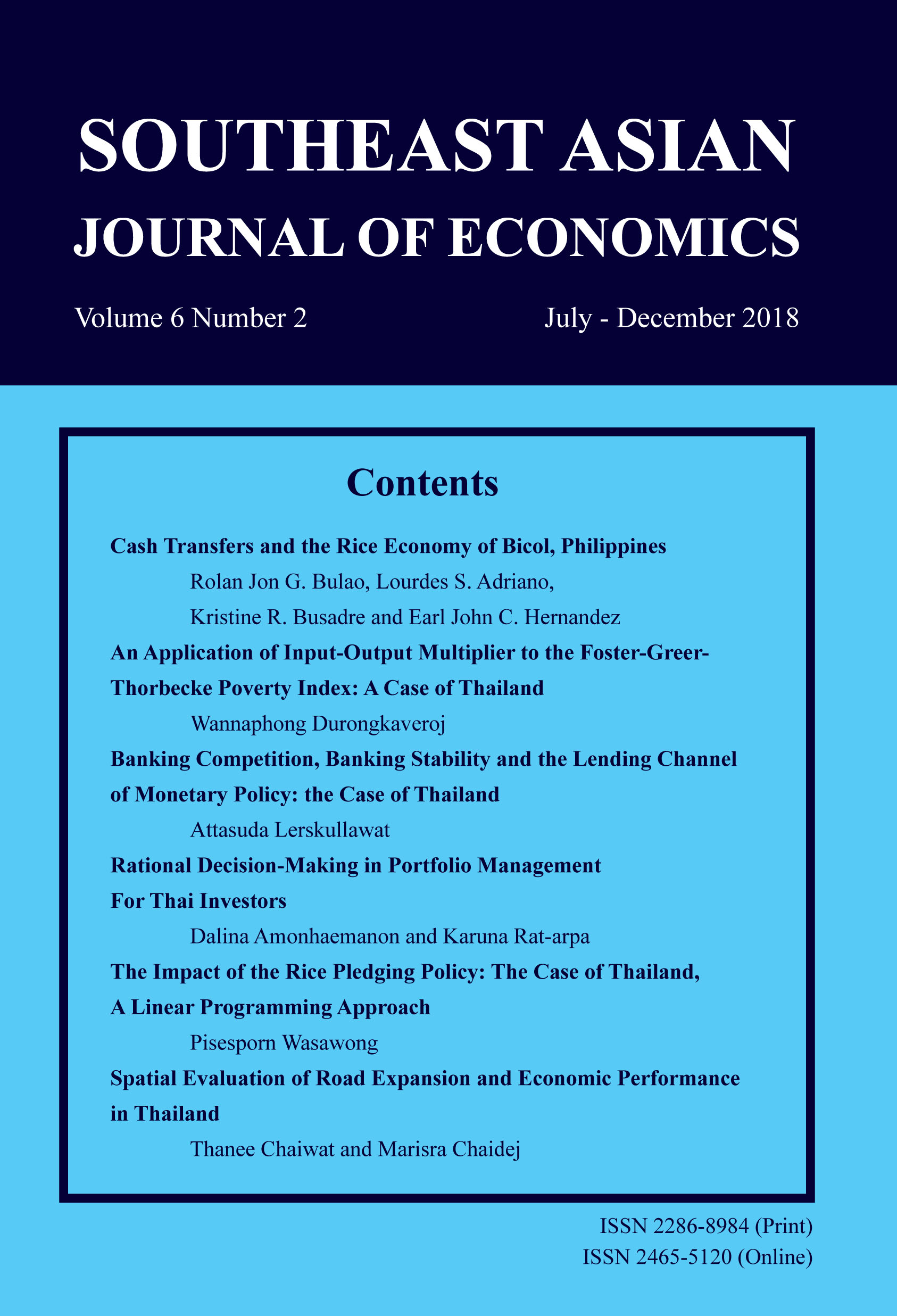Factors Influencing Outward FDI: A Case Study of Thailand in Comparison with Singapore and Malaysia
Keywords:
Outward FDI, Oaxaca-blinder DecompositionAbstract
Thailand has experienced an inward foreign direct investment (FDI) driven economy in recent decades. However, several economic structural changes such as shortages of labor supply, wage rise policy and aging population have increased the importance of outward FDI. However, Thailand’s outward FDI performance is still much lower than some of its ASEAN friends, such as Singapore and Malaysia. In this study, we employ a quantitative method to identify why the level of outward FDI of Thailand is low. In particular, we analyze factors explaining the low level of Thailand’s outward FDI compared with Malaysia and Singapore. Thus, we employ the Oaxaca-Blinder decomposition method to study these factors as done in Wei (2005) for the case of an inward FDI gap between China and India. Further, we use time-series regression analysis to explain the determinants of outward FDI of Thailand to CLMV countries since these countries have a high potential to become Thailand’s outward FDI recipients.
Downloads
How to Cite
Issue
Section
License
The submission of a manuscript implies that the paper is an original work and has not been published elsewhere. The author(s) authorize the journal to reproduce or distribute the paper in printed or other electronic forms.







